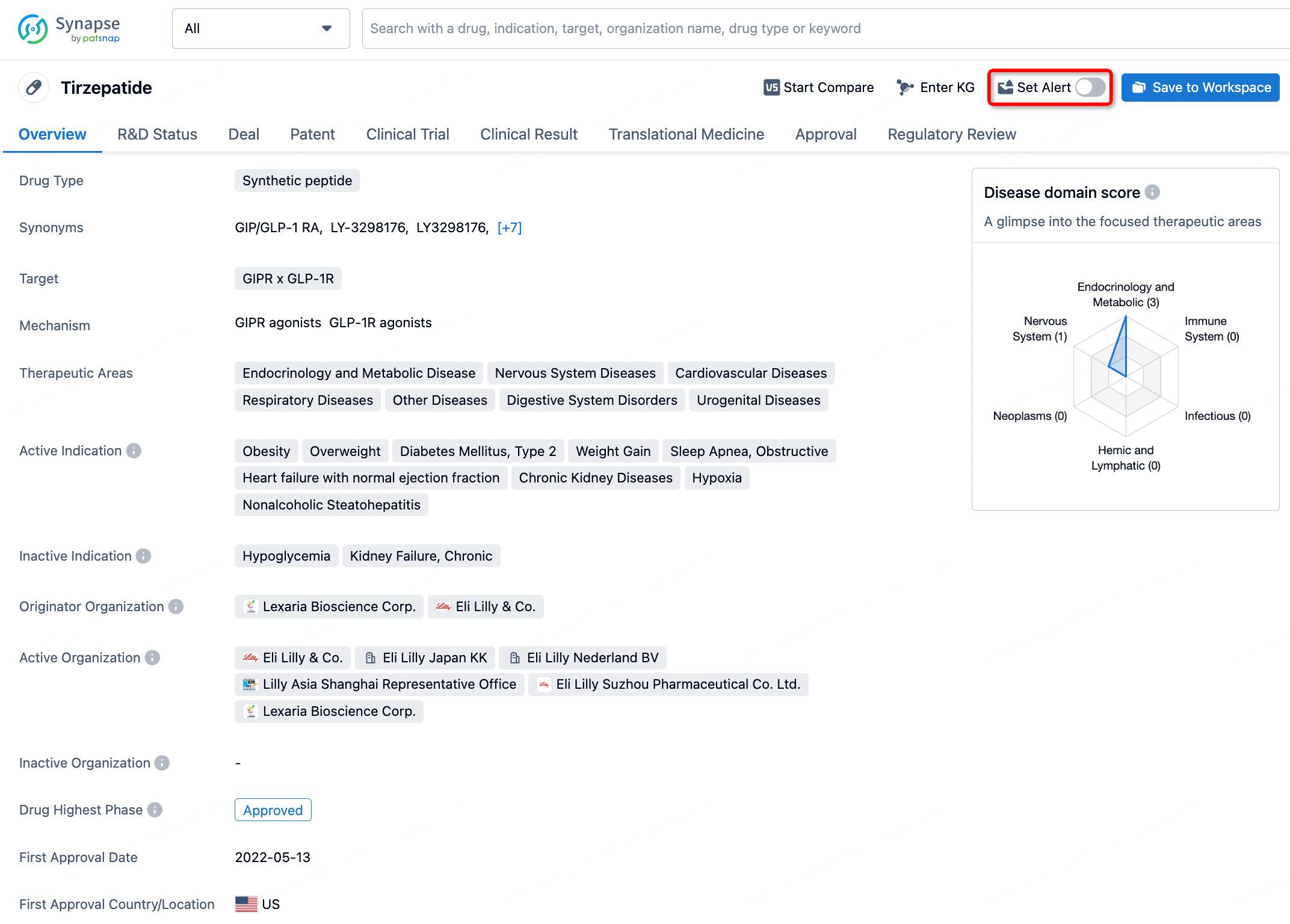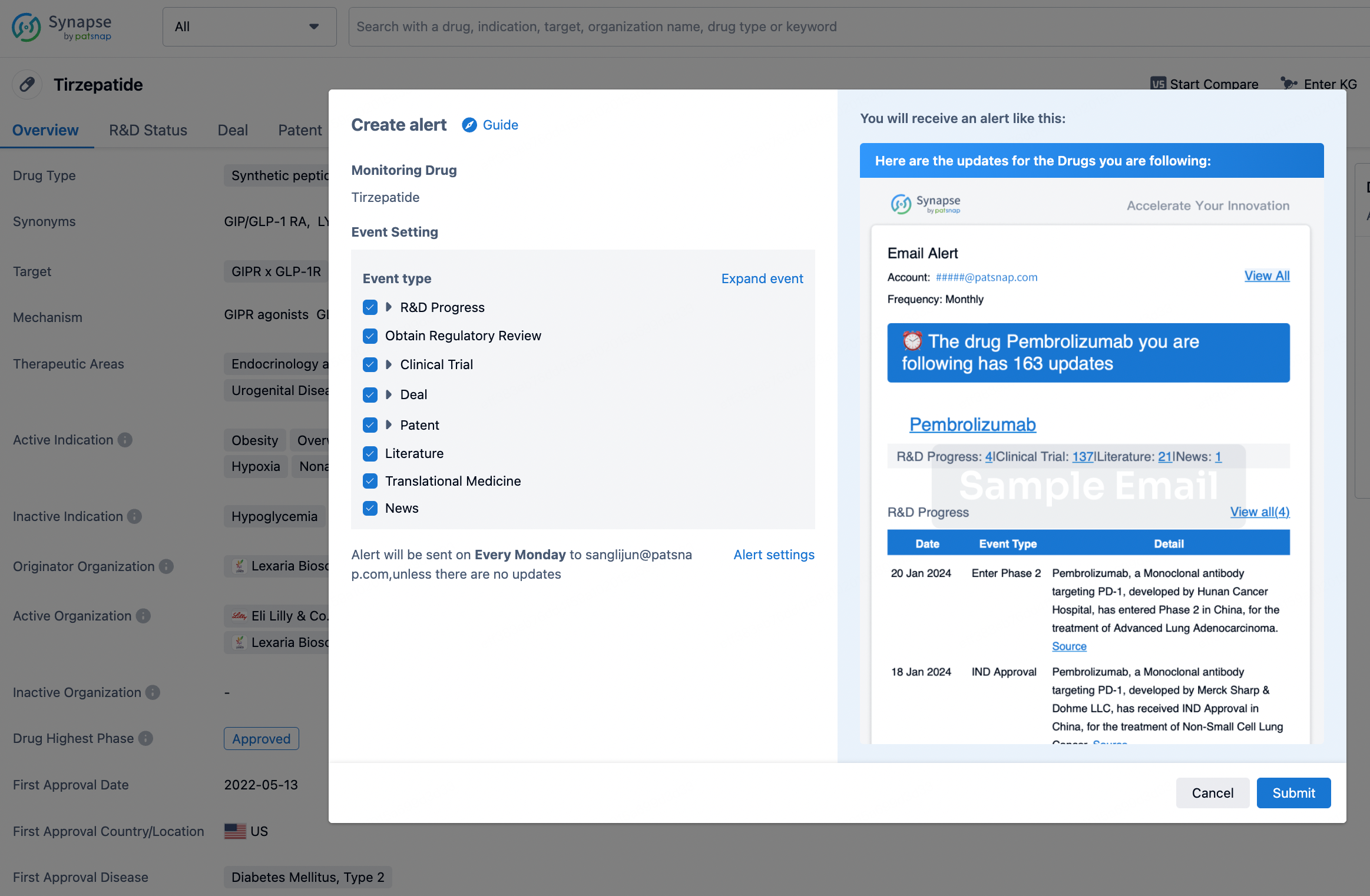Request Demo
What is Carbasalate Calcium used for?
14 June 2024
Carbasalate calcium is a drug that merges the therapeutic properties of aspirin and calcium acetylsalicylate, predominantly marketed under various trade names such as Ascal and Demigran. The drug falls under the category of non-steroidal anti-inflammatory drugs (NSAIDs) and is primarily utilized for its analgesic, anti-inflammatory, and antipyretic properties. The compound is specially designed to reduce gastrointestinal irritation, a common side effect associated with regular aspirin use. Carbasalate calcium targets the enzyme cyclooxygenase (COX), which is integral in the formation of pro-inflammatory compounds. The drug is studied extensively across various research institutions globally, showing promising results in treating conditions like rheumatoid arthritis, cardiovascular diseases, and migraines. Research has progressed significantly, with numerous clinical trials backing its efficacy and safety profile.
Carbasalate Calcium Mechanism of Action
The mechanism of action of carbasalate calcium revolves around its ability to inhibit the COX enzymes. There are two main types of COX enzymes: COX-1 and COX-2. COX-1 is involved in maintaining the normal lining of the stomach, intestinal tract, and other organs, while COX-2 is primarily involved in inflammation and pain. By inhibiting these enzymes, carbasalate calcium effectively reduces the production of prostaglandins, which are lipid compounds that cause inflammation, pain, and fever.
The drug's unique composition allows for a more targeted approach, which minimizes gastrointestinal side effects. Once ingested, carbasalate calcium decomposes into aspirin and calcium acetylsalicylate, both of which contribute to its therapeutic effects. The calcium component also acts as a buffering agent, further reducing the acidity and subsequent irritation in the gastrointestinal tract. This mechanism makes carbasalate calcium an attractive alternative to traditional NSAIDs, particularly for patients who are prone to gastrointestinal issues.
How to Use Carbasalate Calcium
Carbasalate calcium is typically administered orally in the form of tablets or powders. The dosage and frequency of administration depend on the condition being treated and the patient's medical history. For adults, the standard dosage ranges from 330 mg to 990 mg, taken up to three times a day. It's crucial to follow the prescribed dosage instructions provided by healthcare professionals to ensure efficacy and minimize potential side effects.
The drug is absorbed relatively quickly, with an onset time of around 15 to 30 minutes for pain relief. Its effects can last between four to six hours, making it suitable for managing acute and chronic pain conditions. For optimal results, it's advisable to take carbasalate calcium with food or a full glass of water to further mitigate any potential gastrointestinal discomfort.
Patients are advised to avoid lying down immediately after taking the medication to prevent any risk of esophageal irritation. It's also essential to maintain a consistent dosing schedule and not to exceed the recommended daily dosage to avoid adverse effects.
What is Carbasalate Calcium Side Effects
Like all medications, carbasalate calcium is associated with certain side effects. Common side effects include gastrointestinal symptoms such as nausea, indigestion, and abdominal pain. Although these symptoms are usually mild, they can be bothersome for some patients. More severe gastrointestinal side effects, such as ulcers or bleeding, are rare but can occur, especially in patients with a history of gastrointestinal disorders.
Other potential side effects include dizziness, headache, and allergic reactions such as skin rashes and itching. In rare cases, carbasalate calcium can cause more severe allergic reactions, including anaphylaxis, which requires immediate medical attention.
Contraindications for the use of carbasalate calcium include hypersensitivity to aspirin or other NSAIDs, a history of gastrointestinal bleeding or ulcers, and certain medical conditions such as severe liver or kidney disease. It's also contraindicated in patients with bleeding disorders due to its anticoagulant properties.
Pregnant or breastfeeding women should consult their healthcare provider before using carbasalate calcium, as it may pose risks to the fetus or nursing infant. Additionally, patients with asthma or other respiratory conditions should use the drug cautiously, as it can potentially exacerbate these conditions.
What Other Drugs Will Affect Carbasalate Calcium
Carbasalate calcium can interact with various other medications, potentially altering its effectiveness or increasing the risk of adverse effects. One significant interaction is with other anticoagulant drugs, such as warfarin or heparin, which can increase the risk of bleeding. Patients taking these medications should be closely monitored by their healthcare provider.
The drug can also interact with other NSAIDs, such as ibuprofen or naproxen, increasing the likelihood of gastrointestinal side effects and reducing the overall efficacy of either drug. It's generally recommended to avoid concurrent use of multiple NSAIDs.
Certain medications for hypertension, such as ACE inhibitors and diuretics, may have reduced efficacy when taken with carbasalate calcium. The drug can also affect the levels of lithium and methotrexate in the blood, potentially leading to toxicity.
Patients taking medications for diabetes, such as insulin or oral hypoglycemic agents, should be aware that carbasalate calcium can affect blood sugar levels. Regular monitoring of blood glucose is essential for these patients.
It's crucial to inform healthcare providers about all medications, supplements, and herbal products being taken to avoid potential drug interactions and ensure the safe use of carbasalate calcium. Regular follow-up appointments and monitoring can help manage any interactions and adjust dosages as needed.
In conclusion, carbasalate calcium is a valuable NSAID with a beneficial profile for treating pain and inflammation, particularly for patients prone to gastrointestinal issues. Understanding its mechanism of action, proper usage, potential side effects, and drug interactions can help optimize its therapeutic benefits and ensure patient safety.
Carbasalate Calcium Mechanism of Action
The mechanism of action of carbasalate calcium revolves around its ability to inhibit the COX enzymes. There are two main types of COX enzymes: COX-1 and COX-2. COX-1 is involved in maintaining the normal lining of the stomach, intestinal tract, and other organs, while COX-2 is primarily involved in inflammation and pain. By inhibiting these enzymes, carbasalate calcium effectively reduces the production of prostaglandins, which are lipid compounds that cause inflammation, pain, and fever.
The drug's unique composition allows for a more targeted approach, which minimizes gastrointestinal side effects. Once ingested, carbasalate calcium decomposes into aspirin and calcium acetylsalicylate, both of which contribute to its therapeutic effects. The calcium component also acts as a buffering agent, further reducing the acidity and subsequent irritation in the gastrointestinal tract. This mechanism makes carbasalate calcium an attractive alternative to traditional NSAIDs, particularly for patients who are prone to gastrointestinal issues.
How to Use Carbasalate Calcium
Carbasalate calcium is typically administered orally in the form of tablets or powders. The dosage and frequency of administration depend on the condition being treated and the patient's medical history. For adults, the standard dosage ranges from 330 mg to 990 mg, taken up to three times a day. It's crucial to follow the prescribed dosage instructions provided by healthcare professionals to ensure efficacy and minimize potential side effects.
The drug is absorbed relatively quickly, with an onset time of around 15 to 30 minutes for pain relief. Its effects can last between four to six hours, making it suitable for managing acute and chronic pain conditions. For optimal results, it's advisable to take carbasalate calcium with food or a full glass of water to further mitigate any potential gastrointestinal discomfort.
Patients are advised to avoid lying down immediately after taking the medication to prevent any risk of esophageal irritation. It's also essential to maintain a consistent dosing schedule and not to exceed the recommended daily dosage to avoid adverse effects.
What is Carbasalate Calcium Side Effects
Like all medications, carbasalate calcium is associated with certain side effects. Common side effects include gastrointestinal symptoms such as nausea, indigestion, and abdominal pain. Although these symptoms are usually mild, they can be bothersome for some patients. More severe gastrointestinal side effects, such as ulcers or bleeding, are rare but can occur, especially in patients with a history of gastrointestinal disorders.
Other potential side effects include dizziness, headache, and allergic reactions such as skin rashes and itching. In rare cases, carbasalate calcium can cause more severe allergic reactions, including anaphylaxis, which requires immediate medical attention.
Contraindications for the use of carbasalate calcium include hypersensitivity to aspirin or other NSAIDs, a history of gastrointestinal bleeding or ulcers, and certain medical conditions such as severe liver or kidney disease. It's also contraindicated in patients with bleeding disorders due to its anticoagulant properties.
Pregnant or breastfeeding women should consult their healthcare provider before using carbasalate calcium, as it may pose risks to the fetus or nursing infant. Additionally, patients with asthma or other respiratory conditions should use the drug cautiously, as it can potentially exacerbate these conditions.
What Other Drugs Will Affect Carbasalate Calcium
Carbasalate calcium can interact with various other medications, potentially altering its effectiveness or increasing the risk of adverse effects. One significant interaction is with other anticoagulant drugs, such as warfarin or heparin, which can increase the risk of bleeding. Patients taking these medications should be closely monitored by their healthcare provider.
The drug can also interact with other NSAIDs, such as ibuprofen or naproxen, increasing the likelihood of gastrointestinal side effects and reducing the overall efficacy of either drug. It's generally recommended to avoid concurrent use of multiple NSAIDs.
Certain medications for hypertension, such as ACE inhibitors and diuretics, may have reduced efficacy when taken with carbasalate calcium. The drug can also affect the levels of lithium and methotrexate in the blood, potentially leading to toxicity.
Patients taking medications for diabetes, such as insulin or oral hypoglycemic agents, should be aware that carbasalate calcium can affect blood sugar levels. Regular monitoring of blood glucose is essential for these patients.
It's crucial to inform healthcare providers about all medications, supplements, and herbal products being taken to avoid potential drug interactions and ensure the safe use of carbasalate calcium. Regular follow-up appointments and monitoring can help manage any interactions and adjust dosages as needed.
In conclusion, carbasalate calcium is a valuable NSAID with a beneficial profile for treating pain and inflammation, particularly for patients prone to gastrointestinal issues. Understanding its mechanism of action, proper usage, potential side effects, and drug interactions can help optimize its therapeutic benefits and ensure patient safety.
How to obtain the latest development progress of all drugs?
In the Synapse database, you can stay updated on the latest research and development advances of all drugs. This service is accessible anytime and anywhere, with updates available daily or weekly. Use the "Set Alert" function to stay informed. Click on the image below to embark on a brand new journey of drug discovery!
AI Agents Built for Biopharma Breakthroughs
Accelerate discovery. Empower decisions. Transform outcomes.
Get started for free today!
Accelerate Strategic R&D decision making with Synapse, PatSnap’s AI-powered Connected Innovation Intelligence Platform Built for Life Sciences Professionals.
Start your data trial now!
Synapse data is also accessible to external entities via APIs or data packages. Empower better decisions with the latest in pharmaceutical intelligence.


